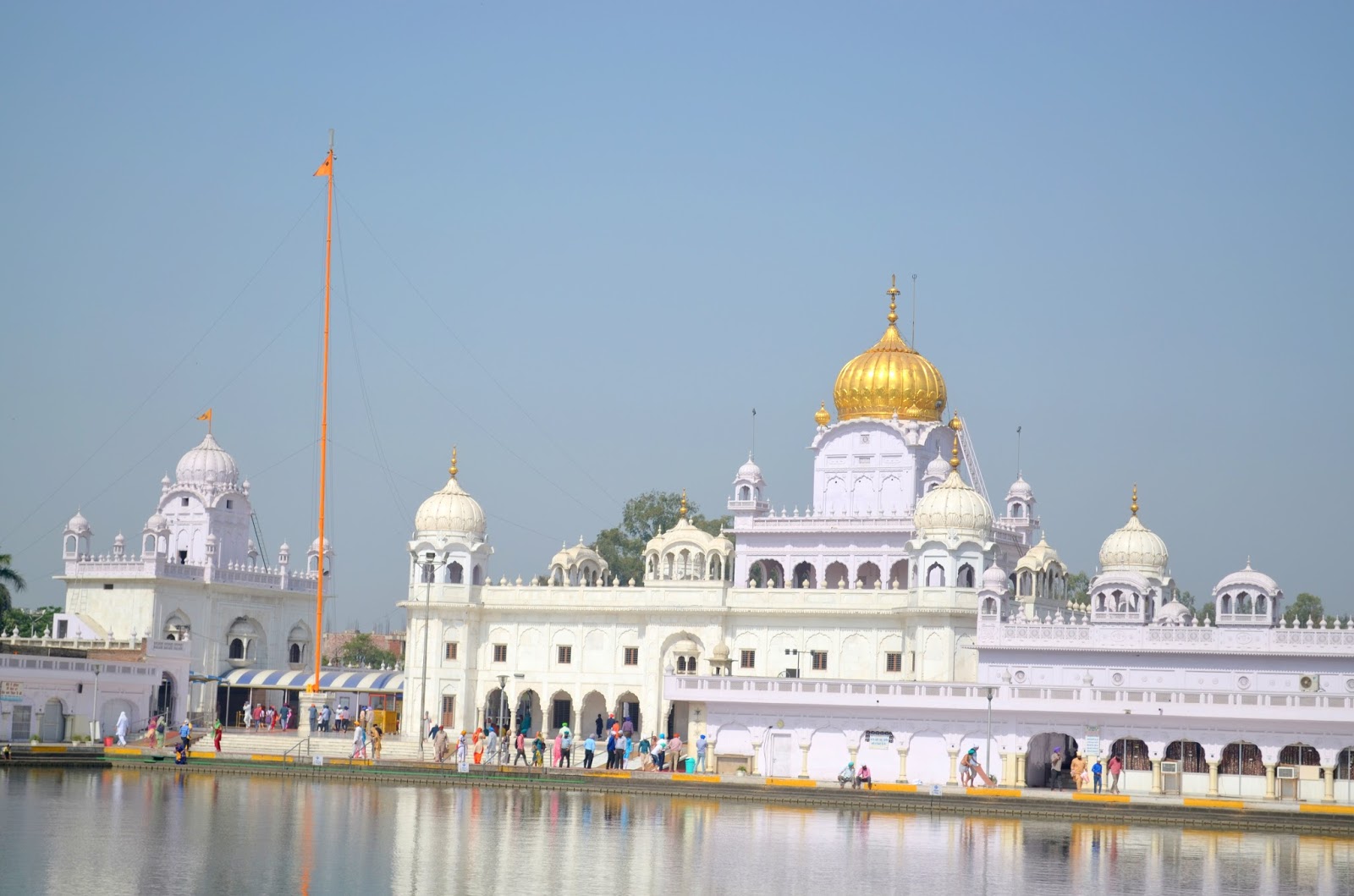
Manager Contact Number: 0175-2226941
Address: SH64, Lehala Colony and Upkar Nagar, Patiala Ctiy, Punjab 147001, India
Gurdwara Sri Dukh Niwaran Sahib is located in Patiala city. However, this area used to be a small village by the name of Lehal when Sri Guru Tegh Bahadur Ji visited.
As per an old handwritten document which is still present in the Gurdwara, a villager named Bhag Ram of Lehal went to the neighbouring town of Saifabad (currently known as Bahadurgarh) when he heard that Guru Tegh Bahadur was nearby.
Bhag Ram asked Guru Tegh Bahadur to visit Lehal village and help bless the village as it was captivated by a deadly and mysterious disease.
After hearing this, Guru Tegh Bahadur went to Lehal village on Magh Sudi 5, 1728 Bikram ie. 24th January 1672. Guru Tegh Bahadur rested near the village pond, he held diwans and prayed to God under a Banyan tree.
Shortly afterwards the village was rid its deadly disease. Dukh Niwaran Sahib was the name given to the place where Guru Ji sat which literally means the 'eradicator of suffering'. The pond became famous for its curing virtues.
On Basant Panchmi, a large gathering of people visit the Gurdwara to pay obeisance and take a dip in holy water. Some Sikhs have faith in the healing qualities of the water in the sarovar. Daily Langar is provided to all.
Raja Amar Singh of Patiala (1748-82) had a garden laid out on the site as a memorial which he entrusted to Nihang Sikhs. Records of a court case in 1870 mention a Guru's garden and a Nihangs well being in existence here.
In 1920, during a survey for the proposed construction of Sirhind-Patiala-Jakhal railway line, it appeared that the banyan tree under which had sat Guru Tegh Bahadur would have to be removed. But men charged with felling it refused to touch it. Ultimately, Maharaja Bhupinder Singh ordered cancellation of the entire project. No gurudwara building had, however, been raised.
It was only in 1930 that a committee was formed to collect funds and commence construction. The Gurdwara when completed passed under the administrative control of the Patiala state government. It was later transferred to the Dharam Arth Board of the Patiala and East Punjab States Union and eventually to the Shiromani Gurdwara Parbandhak Committee.
The building complex sprawls over several acres. The two storey gateway has a collapsible iron gate and black and white marble floor. On the left of the pathway leading to the principal building is a small marble Gurdwara marking the site where Guru Tegh Bahadur had sat under the banyan tree. The central two storey building, with a domed pavilion on top, is on a raised base having an octagonal domed chamber at each corner. The pinnacled lotus dome on top has a round sun-window on each side with a curved coping, projected horizontally at the ends. There are decorative domed pavilions at the corners and lotus blossoms in leaf in the middle on top of the walls.
The interior is paved with marble slabs in white and grey against black and white of the outer platform. The walls and pillars are also panelled with white marble slabs. The ceiling is decorated with stucco work in floral design. The Guru Granth Sahib is seated under a square canopy at the far end. The 75 metre square sarovar, since considerably extended, is on the right and Guru ka Langar on the left as one enters. A big gathering is held on the fifth day of the light half of each lunar month. The festival of the year is Basant Panchmi which marks the day of Guru Tegh Bahadur's visit.